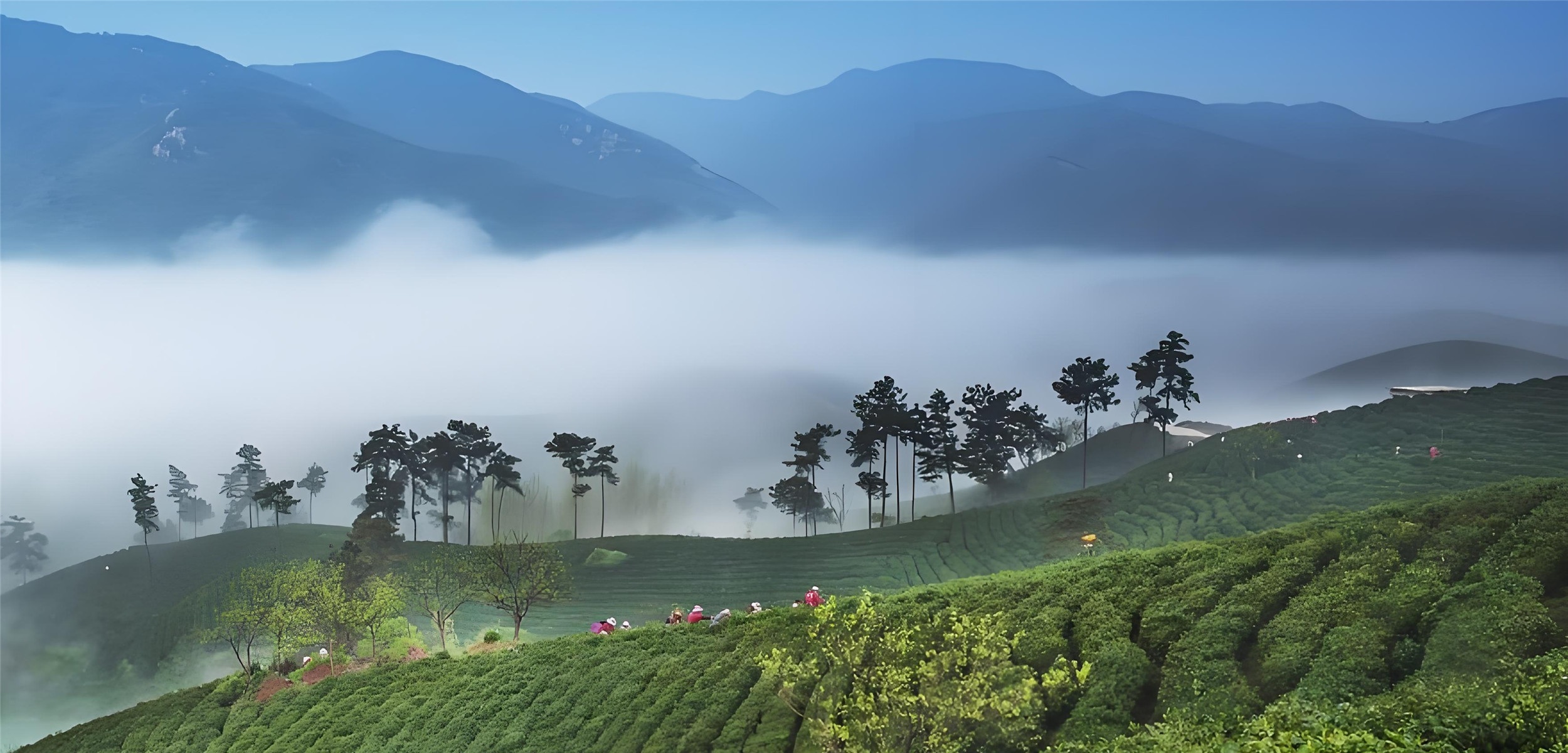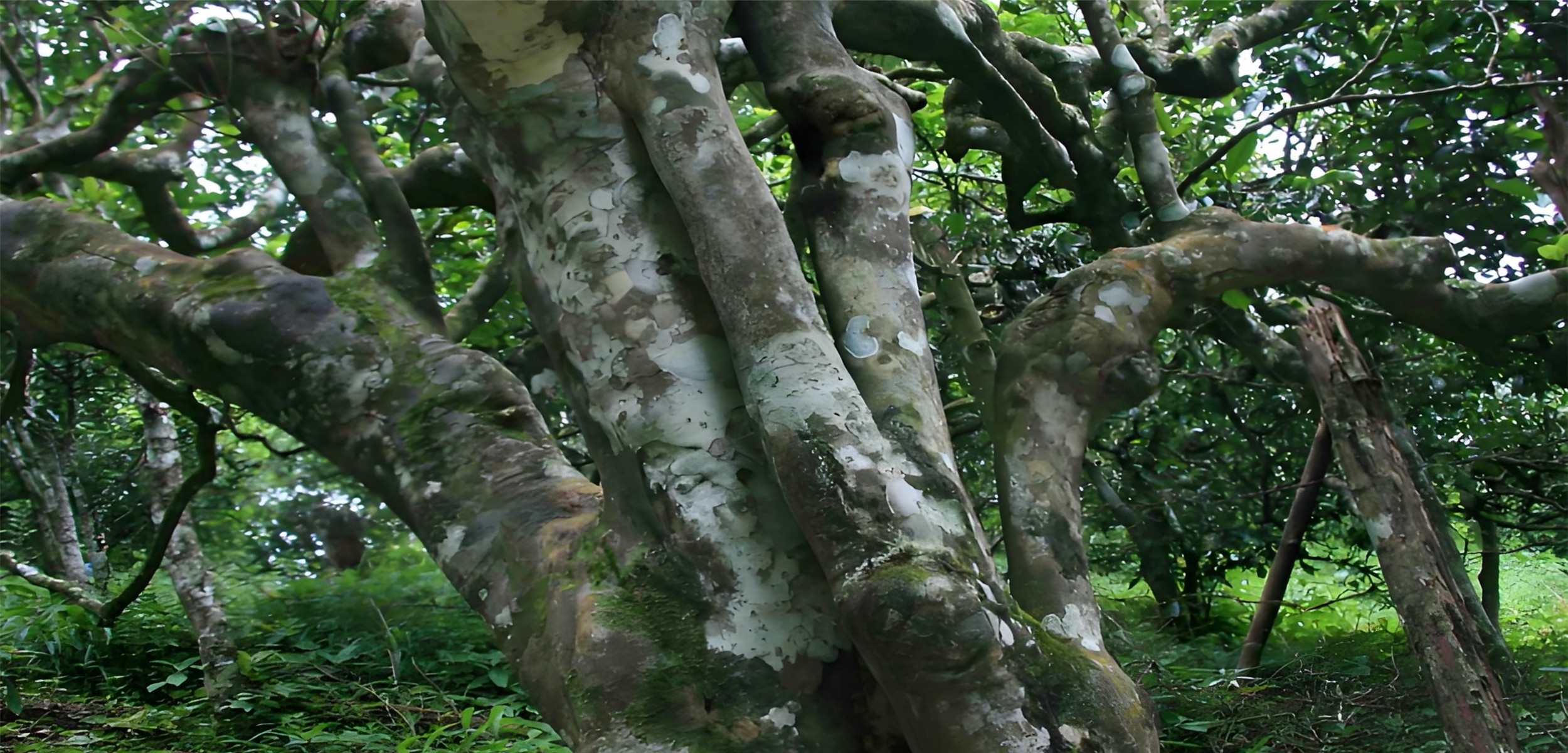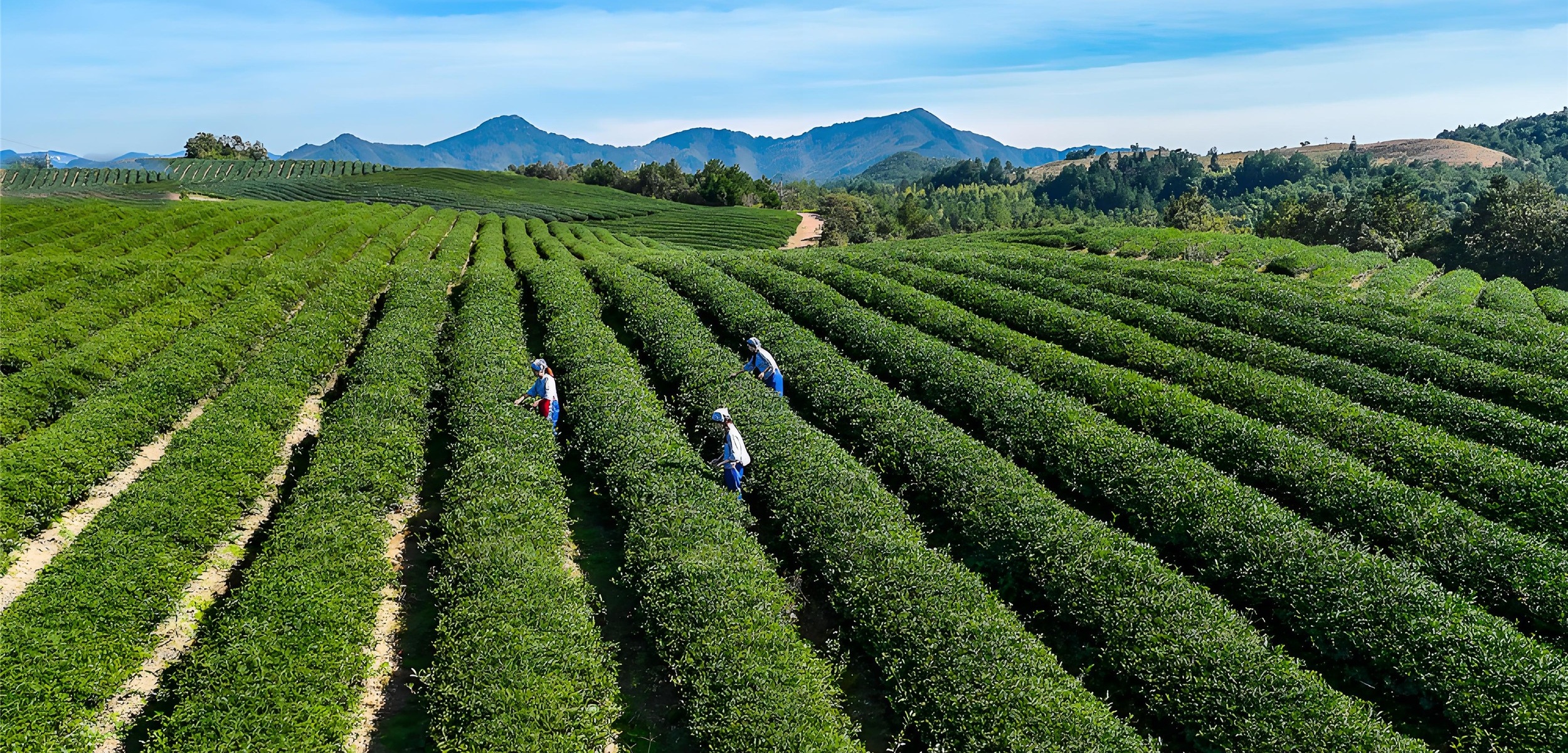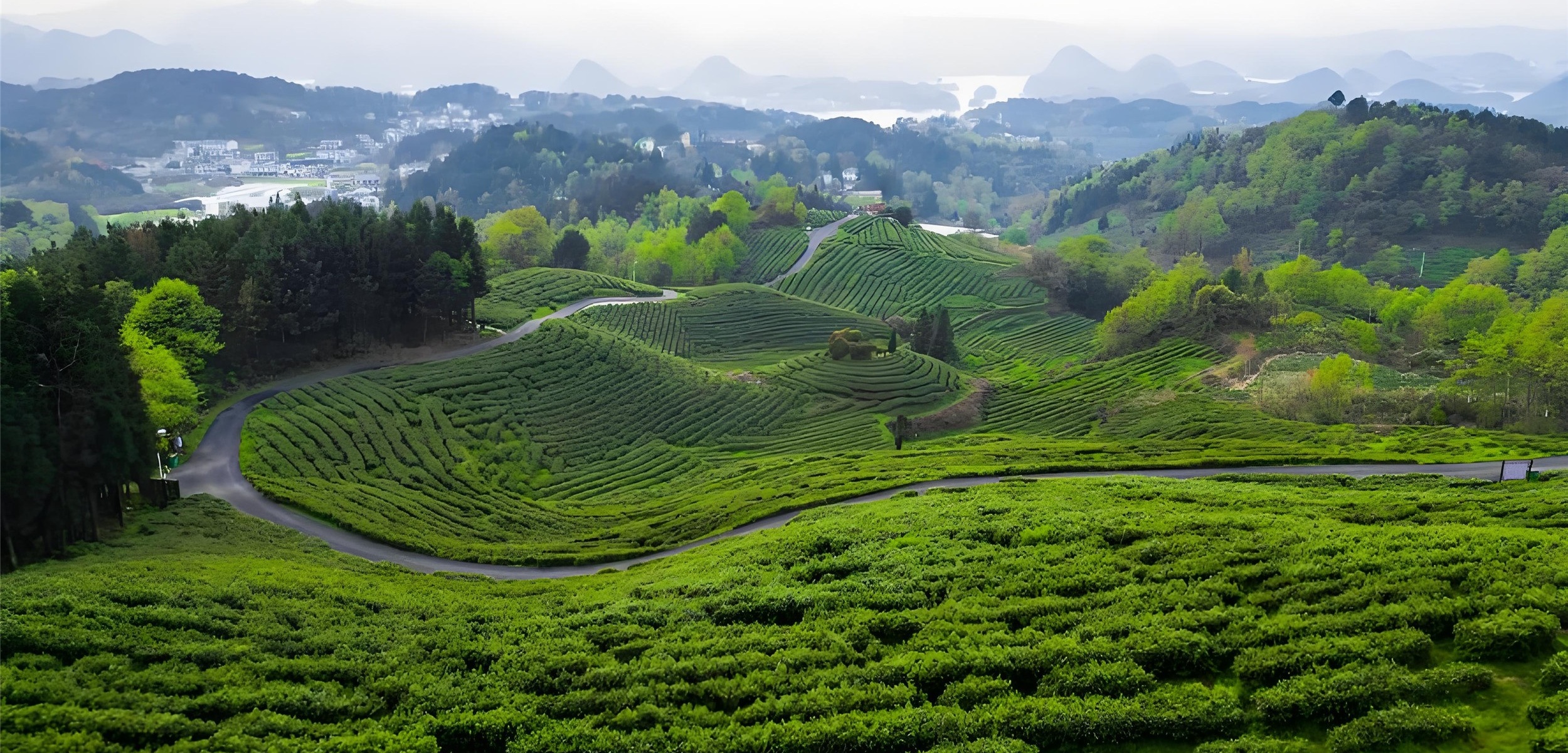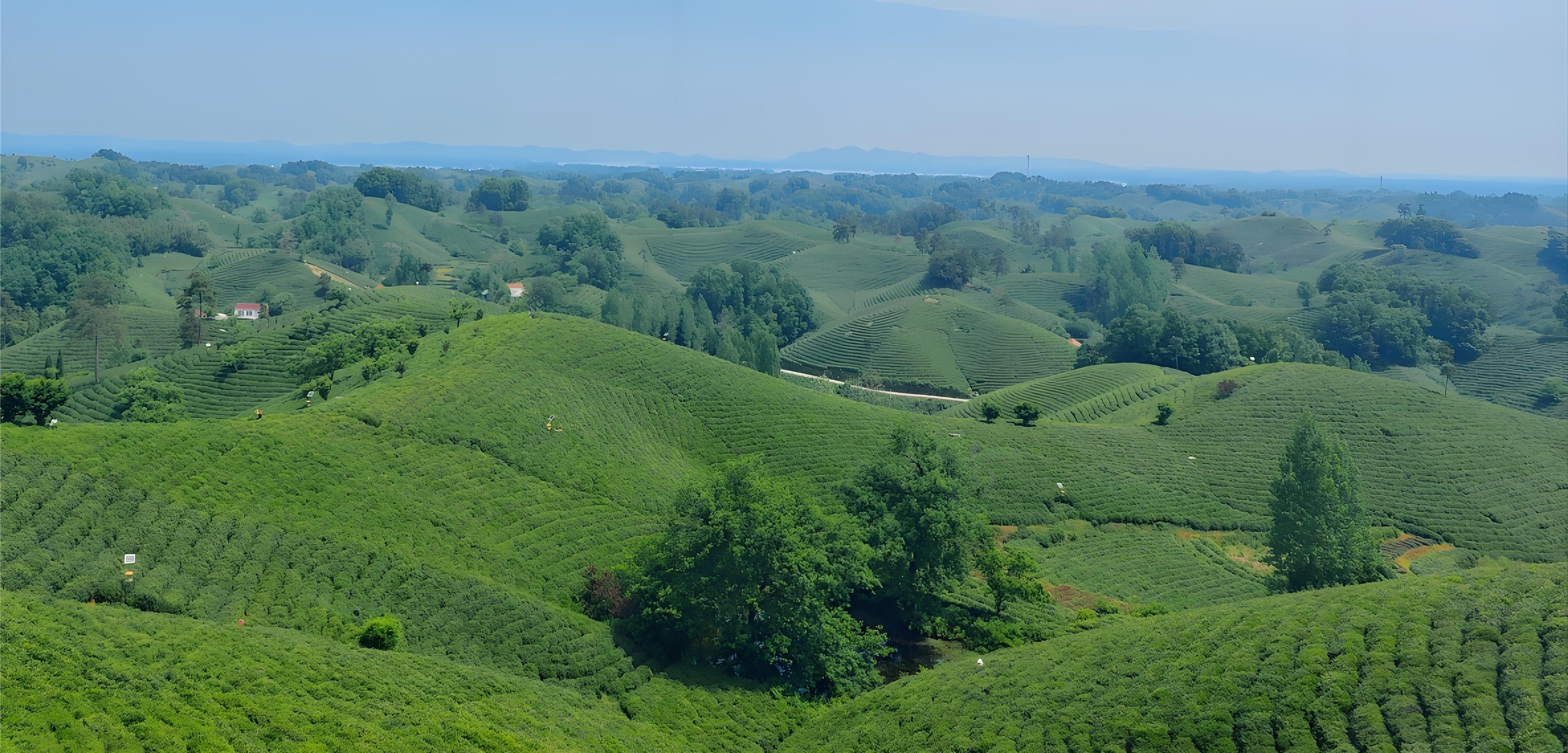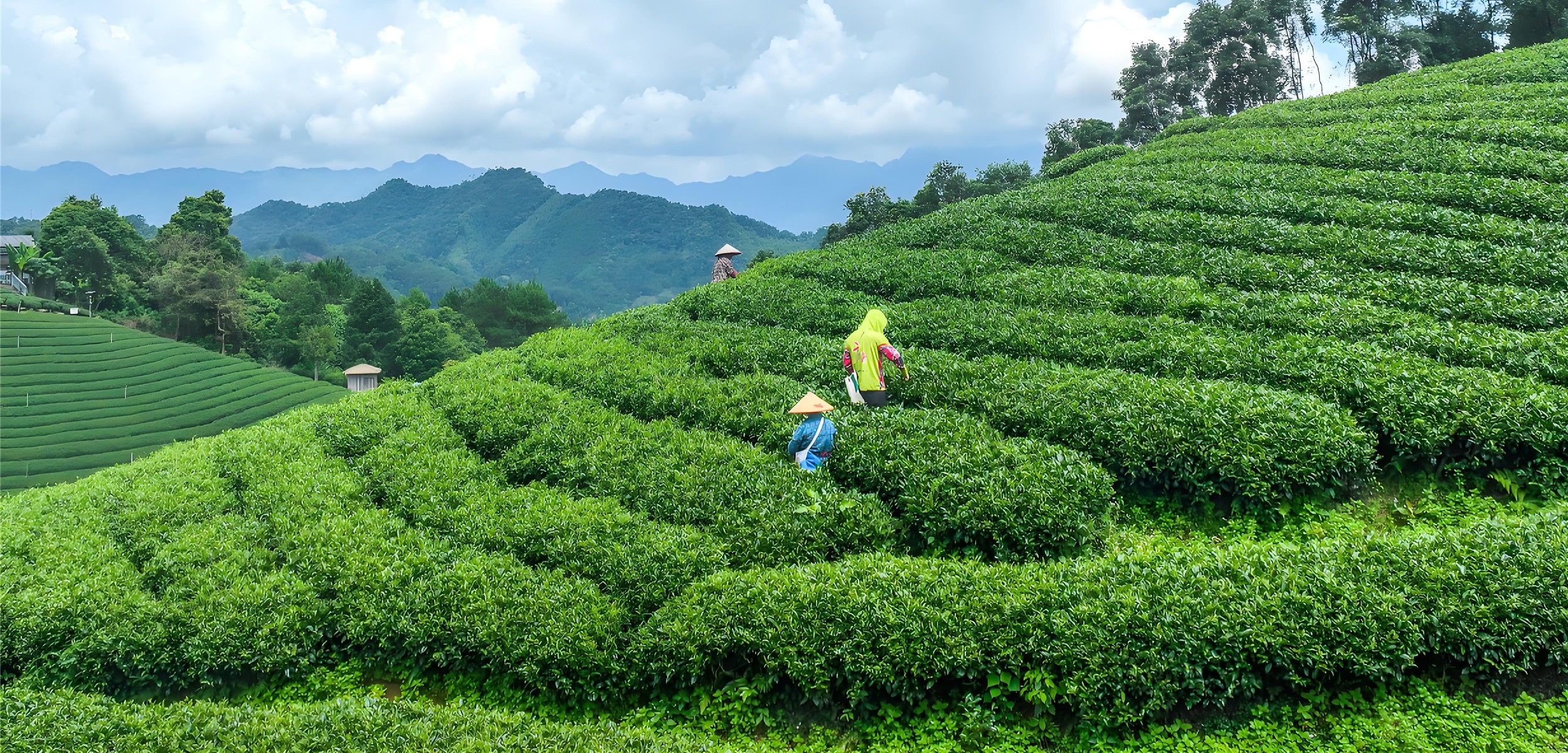中国茶叶介绍 Introduction to Chinese Tea
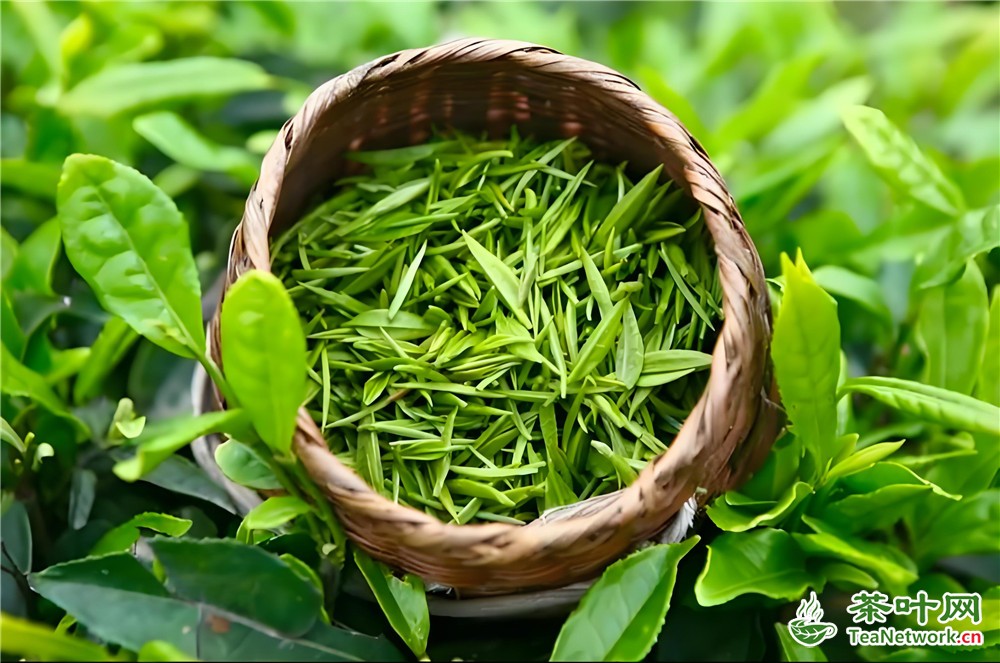
中国茶叶历史悠久,种类繁多,以下是关于中国茶叶的详细介绍:
中国茶叶的历史
中国是茶的发源地,相传神农氏在尝百草时发现了茶叶,最初茶叶被用作药材,后来逐渐演变成为日常饮品。唐代,茶叶成为国饮,陆羽的《茶经》标志着茶文化的正式形成。宋代,泡茶技艺改进,斗茶成为风潮。明代,朱元璋废团茶改为散茶,黑茶、黄茶和花茶的工艺相继形成。清代,中国茶风靡全球,形成了六大茶类。
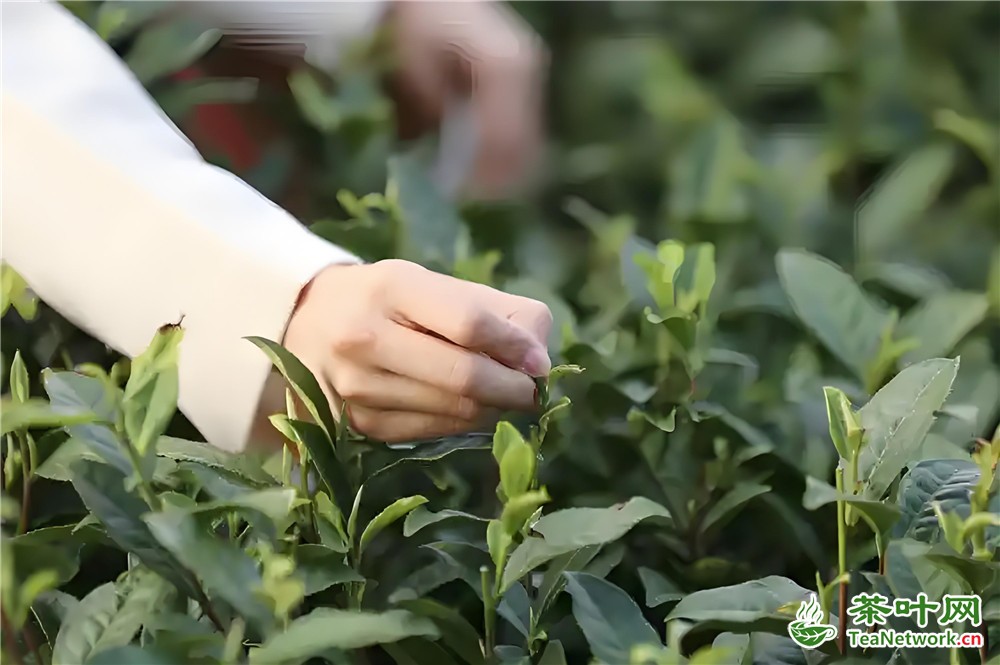
中国茶叶的分类
根据制作方法和茶多酚氧化(发酵)程度的不同,中国茶主要分为六大类:
1. 绿茶:不发酵茶,性偏寒。其制作工艺主要包括杀青、揉捻、干燥等,杀青是关键步骤,目的是停止茶叶的酶促氧化,保持茶叶的绿色。代表茶品有西湖龙井、碧螺春、黄山毛峰、信阳毛尖等。绿茶富含抗氧化剂,有助于降低心血管疾病的风险,还具有抗癌、提神醒脑等功效,适合电脑族、吸烟喝酒者、胃火旺者饮用。
2. 红茶:全发酵茶,性温。发酵过程中,茶叶中的化学成分发生变化,形成了红茶特有的色泽、香气和口感。代表茶品有祁门红茶、滇红、正山小种等。红茶含有茶黄素,有助于降低胆固醇水平,对心血管健康有益,还能增强心脏功能,提高精神集中度,适合体寒人群、体质衰弱者、血脂较高者饮用。
3. 乌龙茶:半发酵茶,性平。其制作工艺介于绿茶和红茶之间,既有绿茶的鲜,又有红茶的醇。代表茶品有铁观音、大红袍、凤凰单丛等。乌龙茶含有的茶多酚有助于降低血脂,对减肥有一定的辅助作用,还能抗氧化、改善消化,适合消化不良、血脂较高、口干舌燥者饮用。
4. 黄茶:微发酵茶,性寒。制作过程中多了一道闷黄工艺,赋予了黄茶独特的香气和味道。代表茶品有君山银针、蒙顶黄芽、霍山黄芽等。黄茶有助于促进消化,特别适合饭后饮用,还具有抗氧化、提神醒脑等功效,适合消化不良、神疲乏力、食欲缺乏者饮用。
5. 白茶:微发酵茶,性凉。制作工艺相对简单,不经过杀青,直接让茶叶自然凋零、干燥。代表茶品有白毫银针、白牡丹、寿眉等。白茶中的抗氧化剂有助于增强免疫系统,对抗感染,还具有抗炎、促进皮肤健康等功效,适合精神紧张、压力大者、睡眠不佳者饮用。
6. 黑茶:后发酵茶,性温。黑茶在制作过程中经过渥堆等特殊工艺,茶叶会在存放过程中继续发酵,越陈越香。代表茶品有普洱茶、安化黑茶、六堡茶等。黑茶有助于改善肠道菌群,促进消化,还能降低血脂、减肥,适合喜食肉者、胃肠不佳、高血压者饮用。
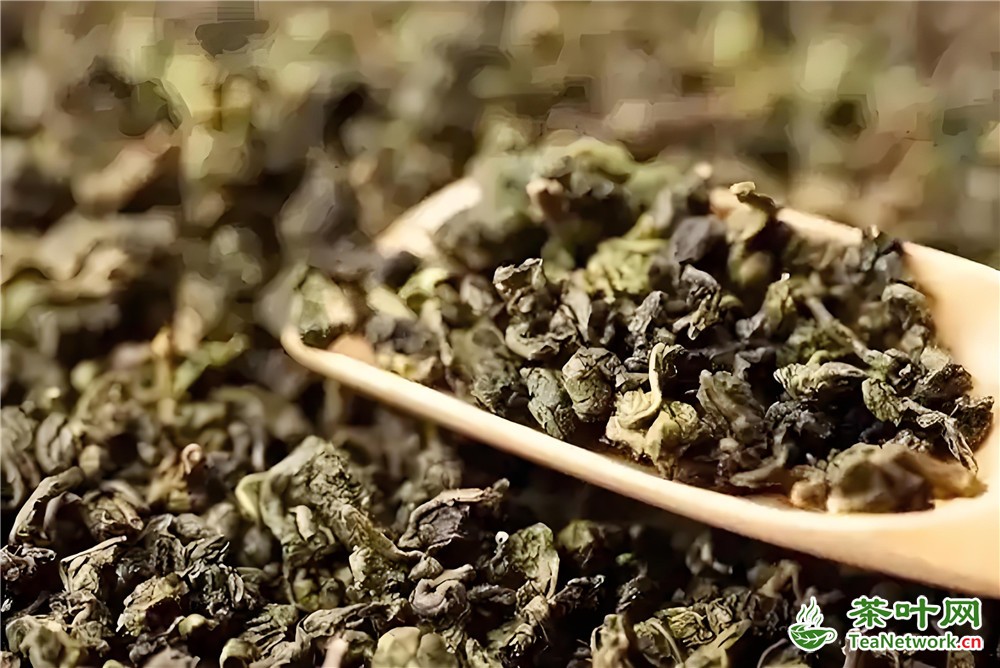
中国茶叶的制作工艺
1. 采摘:不同茶类的采摘标准和时节各异,春茶一般品质较好。如绿茶,通常采摘一芽一叶或一芽二叶;红茶的采摘标准与绿茶相似,但也有一些特殊的要求。
2. 杀青:是绿茶和乌龙茶制作中的关键步骤,通过高温迅速杀死茶叶中的酶,停止茶叶的酶促氧化,保持茶叶的绿色。
3. 发酵:发酵程度的不同决定了茶叶的类别。绿茶不发酵,红茶全发酵,乌龙茶半发酵,黄茶和白茶微发酵,黑茶后发酵。
4. 干燥:是茶叶保存的关键,通过控制水分含量,确保茶叶的品质和风味。干燥方法有炒干、烘干、晒干等。
5. 特殊工艺:如黄茶的闷黄工艺,通过控制湿度和温度,使茶叶在氧化过程中产生独特的香气;黑茶的渥堆工艺,通过堆叠和翻堆,促进茶叶的后发酵。
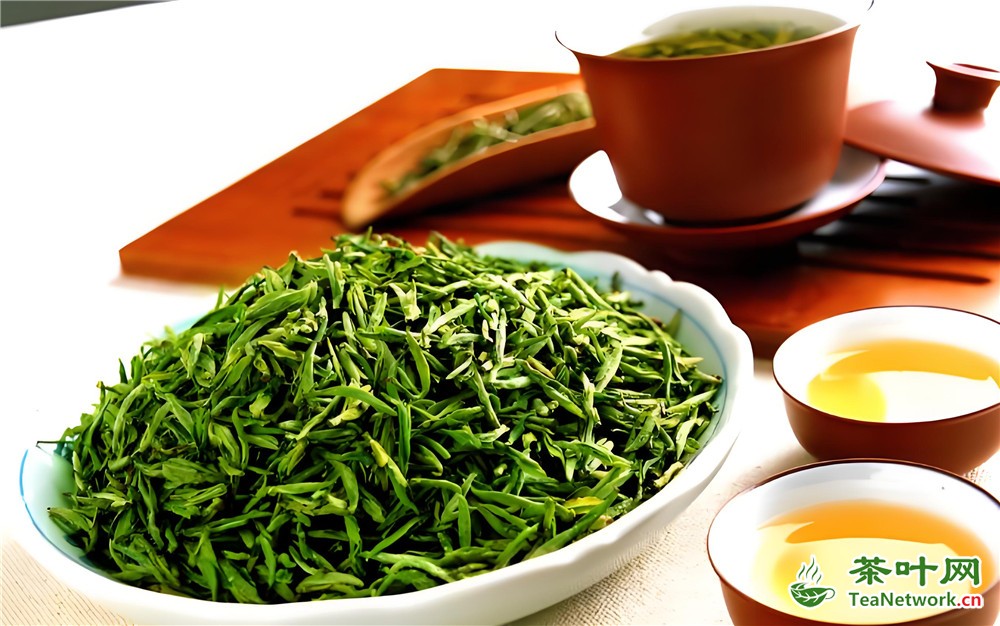
中国茶叶的品鉴与冲泡
1. 品鉴:品鉴茶叶需观其色、闻其香、品其味、赏其形。观察茶叶的外形是否匀整、色泽是否油润;闻茶叶的香气是否高而持久、香型是否独特;品尝茶叶的滋味是否醇厚鲜爽、回甘是否明显;欣赏茶叶的形态是否优美。
2. 冲泡:不同茶类的适宜水温、冲泡器具和冲泡方法各异。绿茶一般用80-85℃的水温,冲泡2-3分钟,适合用玻璃杯或瓷壶;红茶用90-95℃的水温,冲泡3-5分钟,适合用瓷壶或紫砂壶;乌龙茶用95-100℃的水温,冲泡时间较短,一般5-45秒,逐泡递增10秒,紫砂壶或盖碗为佳;白茶用85-90℃的水温,冲泡3-5分钟,玻璃杯或瓷壶适宜;黄茶的冲泡方法与绿茶相似;黑茶用95-100℃的水温,冲泡1-2分钟,紫砂壶或瓷壶适合。
中国茶叶的储存
1. 绿茶:最好存放在密封的容器中,并置于冰箱的冷藏室中,避免与有异味的食物一起存放。
2. 红茶:应存放在干燥、阴凉、通风良好的地方,使用密封罐可以保护红茶不受湿气和异味的影响,避免阳光直射和高温。
3. 乌龙茶:最好存放在密封的容器中,避免阳光直射和潮湿,一些高品质的乌龙茶可以在冰箱中冷藏。
4. 白茶:可以存放在密封的容器中,置于阴凉干燥的地方,其微发酵特性使其可以在适当的条件下缓慢陈化。
5. 黄茶:储存方法与绿茶相似,最好存放在密封的容器中,并置于冰箱的冷藏室中,避免高温和潮湿环境。
6. 黑茶:尤其是普洱茶,需要在通风、干燥、无异味的环境中陈化,避免将黑茶存放在密封的容器中,阻碍其陈化过程,同时要避免阳光直射和高温。
中国茶叶的产地
中国茶叶的产地广泛,主要分为四大茶区:
1. 江北茶区:包括河南、陕西、甘肃、山东等以及皖北、苏北、鄂北等地。主要生产绿茶、红茶等。
2. 江南茶区:包括浙江、湖南、江西等省和皖南、苏南、鄂南等地。是中国茶叶的主要产区之一,生产绿茶、红茶、乌龙茶、黑茶等多种茶类。
3. 西南茶区:包括云南、贵州、四川三省以及西藏东南部。该茶区是中国最古老的茶区之一,生产绿茶、红茶、黑茶、黄茶等。
4. 华南茶区:包括广东、广西、福建、台湾、海南等省(区)。主要生产乌龙茶、红茶、黑茶、白茶等。
中国茶叶以其丰富的种类、独特的制作工艺、悠久的历史和深厚的文化底蕴,成为了世界饮品中的瑰宝。无论是品饮还是收藏,中国茶叶都具有很高的价值。
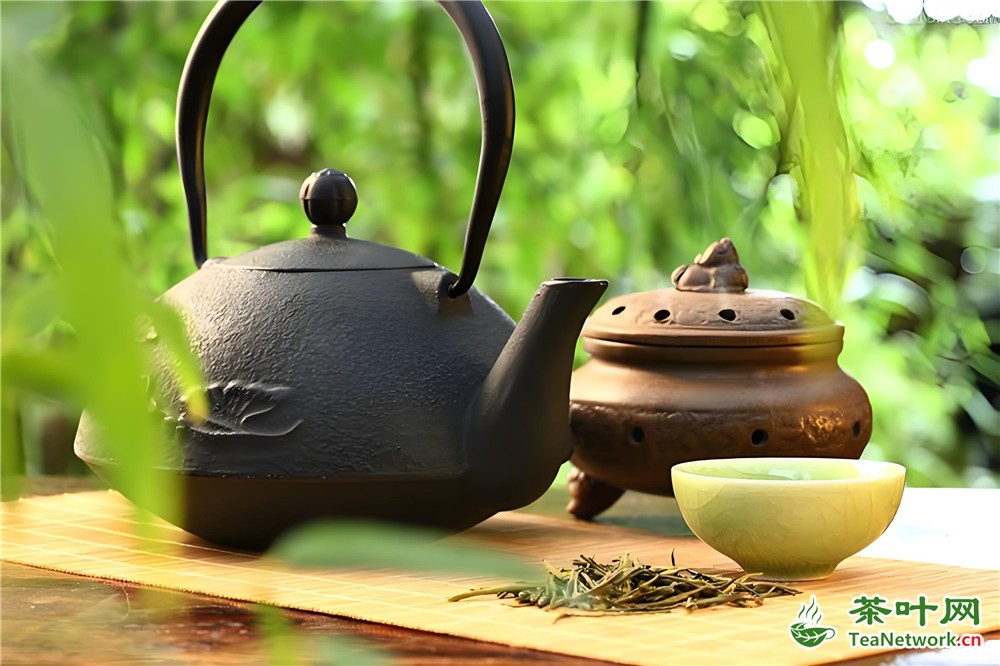
Chinese tea has a long history and a wide variety of types. The following is a detailed introduction to Chinese tea:
The History of Chinese Tea
China is the birthplace of tea. It is said that Shen Nong discovered tea while tasting hundreds of herbs. Initially, tea was used as a medicinal herb, but gradually evolved into a daily beverage. In the Tang Dynasty, tea became the national drink, and Lu Yu's "Classic of Tea" marked the formal formation of tea culture. In the Song Dynasty, tea brewing techniques improved and tea fighting became a trend. In the Ming Dynasty, Zhu Yuanzhang abandoned group tea and replaced it with loose tea, and the techniques of black tea, yellow tea, and floral tea were successively formed. During the Qing Dynasty, Chinese tea became popular worldwide, forming six major types of tea.
Classification of Chinese Tea
According to the different production methods and degrees of oxidation (fermentation) of tea polyphenols, Chinese tea is mainly divided into six categories:
1. Green tea: Non fermented tea, with a cold nature. The production process mainly includes withering, rolling, drying, etc. The withering is a key step aimed at stopping the enzymatic oxidation of tea leaves and maintaining their green color. Representative tea products include West Lake Longjing Tea, Biluochun Tea, Mount Huangshan Maofeng Tea, Xinyang Maojian Tea, etc. Green tea is rich in antioxidants, which can help reduce the risk of cardiovascular disease. It also has anti-cancer and refreshing effects, making it suitable for computer enthusiasts, smokers and drinkers, and those with excessive stomach heat.
2. Black tea: fully fermented tea, warm in nature. During the fermentation process, the chemical composition of tea undergoes changes, forming the unique color, aroma, and taste of black tea. Representative tea products include Qimen Red Tea, Dianhong, Zhengshan Xiaozhong, etc. Black tea contains theaflavins, which help lower cholesterol levels and are beneficial for cardiovascular health. It can also enhance heart function, improve mental concentration, and is suitable for people with cold bodies, weak constitutions, and high blood lipids to drink.
3. Oolong tea: semi fermented tea with a neutral nature. Its production process is between green tea and black tea, with both the freshness of green tea and the richness of black tea. Representative tea products include Tie Guan Yin, Da Hong Pao, Phoenix Dancong, etc. Oolong tea contains tea polyphenols that help reduce blood lipids and have a certain auxiliary effect on weight loss. It can also resist oxidation and improve digestion, making it suitable for people with indigestion, high blood lipids, and dry mouth and tongue to drink.
4. Yellow tea: Slightly fermented tea with a cold nature. During the production process, an additional layer of yellowing technique was added, giving the yellow tea a unique aroma and flavor. Representative tea products include Junshan Silver Needle, Mengding Yellow Sprout, Huoshan Yellow Sprout, etc. Yellow tea helps promote digestion and is particularly suitable for consumption after meals. It also has antioxidant and refreshing effects, making it suitable for people with indigestion, fatigue, and lack of appetite.
5. White tea: Slightly fermented tea, cool in nature. The production process is relatively simple, without withering, allowing the tea leaves to naturally wither and dry. Representative tea products include Bai Hao Yin Zhen, Bai Mudan, Shoumei, etc. The antioxidants in white tea help enhance the immune system, fight infections, and have anti-inflammatory and skin health promoting effects, making it suitable for people with mental stress, high stress, and poor sleep.
6. Black tea: post fermented tea, warm in nature. Black tea undergoes special processes such as piling during the production process, and the tea leaves continue to ferment during storage, becoming more fragrant as they age. Representative tea products include Pu'er tea, Anhua black tea, Liubao tea, etc. Black tea can help improve gut microbiota, promote digestion, lower blood lipids, and help with weight loss. It is suitable for people who enjoy meat, have poor gastrointestinal health, and high blood pressure.
The production process of Chinese tea
1. Picking: Different types of tea have different picking standards and seasons, and spring tea generally has better quality. Like green tea, usually harvested with one bud and one leaf or one bud and two leaves; The picking standards for black tea are similar to those for green tea, but there are also some special requirements.
2. Qingqing: It is a key step in the production of green tea and oolong tea, which rapidly kills enzymes in the tea leaves through high temperature, stops enzymatic oxidation of the tea leaves, and maintains the green color of the tea leaves.
3. Fermentation: The degree of fermentation determines the type of tea. Green tea does not ferment, black tea undergoes full fermentation, oolong tea undergoes semi fermentation, yellow and white tea undergo slight fermentation, and black tea undergoes post fermentation.
4. Drying: It is the key to tea preservation, ensuring the quality and flavor of tea by controlling the moisture content. Drying methods include stir frying, drying, sun drying, etc.
5. Special process: such as the yellowing process of yellow tea, by controlling humidity and temperature, the tea leaves produce a unique aroma during the oxidation process; The piling process of black tea promotes post fermentation of tea leaves through stacking and flipping.
Tasting and Brewing of Chinese Tea
1. Tasting: To taste tea, one needs to observe its color, smell its aroma, taste its flavor, and appreciate its appearance. Observe whether the appearance of tea leaves is uniform and whether the color is oily; Whether the aroma of tea leaves is high and long-lasting, and whether the fragrance type is unique; Whether the taste of tea is mellow, fresh and refreshing, and whether the aftertaste is obvious; Appreciate whether the shape of tea leaves is beautiful.
2. Brewing: Different types of tea have different suitable water temperatures, brewing equipment, and brewing methods. Green tea is usually brewed at a water temperature of 80-85 ℃ for 2-3 minutes, and is suitable for use in glass cups or porcelain pots; Red tea should be brewed at a water temperature of 90-95 ℃ for 3-5 minutes, suitable for use in porcelain or purple clay pots; Oolong tea is brewed at a water temperature of 95-100 ℃ for a relatively short time, usually 5-45 seconds, gradually increasing by 10 seconds. It is best to use a purple clay pot or a covered bowl; White tea should be brewed at a water temperature of 85-90 ℃ for 3-5 minutes, preferably in a glass or porcelain pot; The brewing method of yellow tea is similar to that of green tea; Black tea should be brewed at a water temperature of 95-100 ℃ for 1-2 minutes in a purple clay pot or porcelain pot.
Storage of Chinese tea
1. Green tea: It is best to store it in a sealed container and keep it in the refrigerator's refrigerated compartment to avoid storing it together with food with odors.
2. Black tea: It should be stored in a dry, cool, and well ventilated place. Using a sealed container can protect black tea from moisture and odors, and avoid direct sunlight and high temperatures.
3. Oolong tea: It is best to store it in a sealed container, avoiding direct sunlight and moisture. Some high-quality Oolong tea can be refrigerated in the refrigerator.
4. White tea: It can be stored in a sealed container in a cool and dry place, and its micro fermentation characteristics allow it to slowly age under appropriate conditions.
5. Yellow tea: The storage method is similar to green tea, preferably stored in a sealed container and placed in the refrigerator's refrigeration compartment to avoid high temperatures and humid environments.
6. Black tea: Especially Pu erh tea, it needs to be aged in a ventilated, dry, and odorless environment. Avoid storing black tea in sealed containers to hinder its aging process, and also avoid direct sunlight and high temperatures.
The origin of Chinese tea
Chinese tea has a wide range of production areas, mainly divided into four major tea regions:
1. Jiangbei Tea Area: including Henan, Shaanxi, Gansu, Shandong, as well as northern Anhui, northern Jiangsu, northern Hubei and other places. Mainly producing green tea, black tea, etc.
2. Jiangnan tea region: including provinces such as Zhejiang, Hunan, Jiangxi, as well as southern Anhui, southern Jiangsu, and southern Hubei. It is one of the main tea producing areas in China, producing various types of tea such as green tea, black tea, oolong tea, and black tea.
3. Southwest tea area: including Yunnan, Guizhou and Sichuan provinces as well as southeast Xizang. This tea region is one of the oldest tea regions in China, producing green tea, black tea, black tea, yellow tea, and more.
4. South China Tea Region: including provinces (regions) such as Guangdong, Guangxi, Fujian, Taiwan, and Hainan. We mainly produce oolong tea, black tea, black tea, white tea, etc.
Chinese tea has become a treasure among world beverages due to its rich variety, unique production techniques, long history, and profound cultural heritage. Whether for drinking or collecting, Chinese tea has high value.
